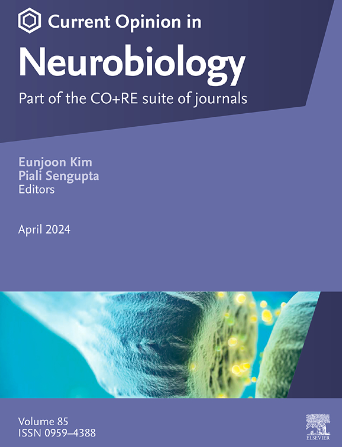支持父母行为的神经可塑性
IF 5.2
2区 医学
Q1 NEUROSCIENCES
引用次数: 0
摘要
为人父母会带来巨大的变化,使照顾者能够照顾和养育婴儿。神经回路必须适应照顾的需要,以协调各种复杂的养育行为。这些变化发生在两个相反的回路之间:一个回路准备表达父母的养育行为来执行照顾,另一个回路在时机不合适时抑制这种行为表达。在这篇综述中,我们概述了支持父母行为的积极和消极控制的神经回路,并讨论了这些相反的回路是如何改变以促进亲代照顾的发生的机制。本文章由计算机程序翻译,如有差异,请以英文原文为准。
Neural plasticity supporting parental behaviors
Becoming a parent involves extraordinary changes that allow caregivers to attend to and nurture infants. Neural circuits must adapt to the demands of caregiving to orchestrate various complex nurturing behaviors. These changes occur between two opposing circuits: a circuit primed for the expression of parenting to execute caregiving, and a circuit that suppresses this behavioral expression when the timing is not appropriate. In this review, we provide an overview of the neural circuits supporting the positive and negative control of parental behaviors and discuss mechanisms by which these opposing circuits are altered to facilitate the onset of parental care.
求助全文
通过发布文献求助,成功后即可免费获取论文全文。
去求助
来源期刊

Current Opinion in Neurobiology
医学-神经科学
CiteScore
11.10
自引率
1.80%
发文量
130
审稿时长
4-8 weeks
期刊介绍:
Current Opinion in Neurobiology publishes short annotated reviews by leading experts on recent developments in the field of neurobiology. These experts write short reviews describing recent discoveries in this field (in the past 2-5 years), as well as highlighting select individual papers of particular significance.
The journal is thus an important resource allowing researchers and educators to quickly gain an overview and rich understanding of complex and current issues in the field of Neurobiology. The journal takes a unique and valuable approach in focusing each special issue around a topic of scientific and/or societal interest, and then bringing together leading international experts studying that topic, embracing diverse methodologies and perspectives.
Journal Content: The journal consists of 6 issues per year, covering 8 recurring topics every other year in the following categories:
-Neurobiology of Disease-
Neurobiology of Behavior-
Cellular Neuroscience-
Systems Neuroscience-
Developmental Neuroscience-
Neurobiology of Learning and Plasticity-
Molecular Neuroscience-
Computational Neuroscience
 求助内容:
求助内容: 应助结果提醒方式:
应助结果提醒方式:


